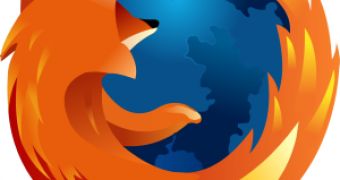"And the beast shall come forth surrounded by a roiling cloud of vengeance. The house of the unbelievers shall be razed and they shall be scorched to the earth. Their tags shall blink until the end of days.
from The Book of Mozilla, 12:10"
This verse announced the birth/release of Netscape Navigator. The verse number refers to the date of the release, that is December 10, 1994. This is basically the ancestor of Firefox, alive and kicking. Just like Microsoft's IE, Netscape's code is also based on Mosaic, the first web browser with a GUI.
"And the beast shall be made legion. Its numbers shall be increased a thousand thousand fold. The din of a million keyboards like unto a great storm shall cover the earth, and the followers of Mammon shall tremble.
from The Book of Mozilla, 3:31 (Red Letter Edition)"
The second verse of The Book of Mozilla refers to the release of Netscape's code, thus making it open source. This meant that anybody could make modifications to it and use it. The release of the code coincides with the creation of Mozilla project (not the Mozilla foundation as we know it now). The date is well known among "believers" and the hint in the verse number refers to March 31, 1998.
"And so at last the beast fell and the unbelievers rejoiced. But all was not lost, for from the ash rose a great bird. The bird gazed down upon the unbelievers and cast fire and thunder upon them. For the beast had been reborn with its strength renewed, and the followers of Mammon cowered in horror.
from The Book of Mozilla, 7:15"
This is the third and last verse in The Book of Mozilla. For those that have a clue on what happened next it's easy to think about the day when AOL shut down the Netscape division and Mozilla Foundation was created. The falling of the beast is hinted towards Netscape's shutting down. The Phoenix bird rising from the ashes is a straight reference to Firefox browser and its original name.
Phoenix catches Fire and the Bird becomes a Fox
Regarding the name of Firefox, it suffered three modifications. At the beginning, it was called Phoenix, then it turned to Firebird and it finally settled to Firefox. At the first public testing version appeared in September 2000, the application was called Phoenix. This had to be changed, as it came in conflict with the trademark of BIOS manufacturer, Phoenix Technologies.
Firebird was the "middle" name of Firefox. This was also inappropriate as there was already a database server called this way so it had to go. Firefox was chosen as it was unique in the computing business and resembled Firebird. Problems were encountered when it came to registering the name as in UK there was already a company that had previously registered it (The Charlton Company). However, a deal was struck between Mozilla Foundation and The Charlton Company for giving the former the license for using Charlton's European trademark.
Firefox came down as an alternative to the existent browsers on the market. It does not have a vast history, but despite all odds, it managed to impose itself on the market as a stable, full featured, fast web browser. Many users soon assimilated it and an increasing number of these are addicted to it.
The early versions of the browser (Phoenix and Firebird) focused on all the aspects competition did not possess. The market share at that time belonged to Internet Explorer (referred to in The Book of Mozilla as Mammon) thus making it the direct competitor.
Phoenix had speed, a fresh look combining the icons from the Orbit theme with respect for the system colors/skins/fonts of the Mozilla classic theme, a customizable toolbar. It was practically a breath of fresh air after the IE domination and users finally had to make a choice regarding the web browser to be employed.
Of course, there weren't many enthusiasts in those days, but as the application evolved and provided all the features and options Microsoft's IE was tardy in offering, the market share started to grow steadily.
Firebird 0.6 came with some new stuff for the user. It mainly dealt with bug fixes, interface changes and a plus of functionality regarding the bookmark managing (a context menu was added).
Firefox trademark was employed beginning with version 0.8 of the application. It also came with a Windows installer so the market niche broadened significantly. It was a new beginning for the Mozilla foundation and a new challenge.
The first stable version of the application, version 1.0, had already incorporated tabbed browsing (November 9, 2004), it was available for the leading operating systems on the market (Mac OS X, Linux distributions and Windows). As stated on their website, the changes of the release consisted in improving the tabbed browsing controls, added lots of languages (41 of them) and "a horde of other bug fixes".
With version 2.0 came the built-in phishing protection, enhanced search capabilities, browser session resuming (a great asset for all the web surfers) - Opera had this implemented a long time ago - web feeds previewing and subscribing tool etc.
However, since the release in 2006 of its latest version, Firefox has been the target of various attacks from hackers. The code was exploited to the max and the developers had to release multiple vulnerability patches in order to survive the aggressions.
Though its market share is still insignificant compared to IE's recorded values, Firefox is a strong web browser that deserves your full attention.
NOTE: In order to go to The Book of Mozilla, type about:mozilla in Firefox or Netscape. The links provided in this respect work only in the mentioned browsers.
For alternatives to Firefox you can try here or here. Or, you can read the results of some tests run on all three of them here.

 14 DAY TRIAL //
14 DAY TRIAL //